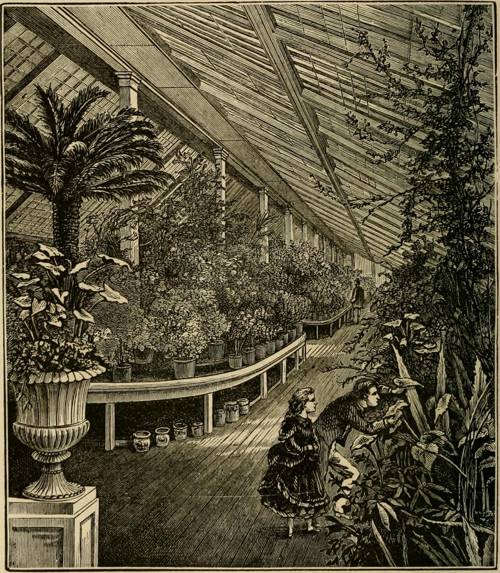
FAQ About Using Indoor Plants to Enhance Indoor Acoustics

How do indoor plants improve acoustics in a room?
Indoor plants improve acoustics by absorbing, deflecting, or diffracting sound waves through their leaves, branches, and soil. Plants with broader leaves tend to be more effective because they offer a larger surface area for sound absorption. The presence of plants can reduce echoes and background noise, making the indoor environment quieter and more peaceful.

Which indoor plants are best for absorbing sound?
Some of the best indoor plants for absorbing sound include the Peace Lily, Rubber Plant, Fiddle Leaf Fig, and Boston Fern. These plants have larger leaves and dense foliage, which makes them particularly effective at absorbing sound. The texture and size of the leaves play significant roles in determining their acoustic impact.

Can indoor plants eliminate the need for other acoustic treatments?
While indoor plants can significantly enhance acoustics by reducing echoes and background noise, they are not generally enough to fully replace professional acoustic treatments. In spaces with serious acoustic issues such as recording studios or large open-plan areas, combining plants with acoustic panels or other treatments might be necessary.

How many indoor plants are needed to notice a difference in room acoustics?
The number of plants required depends on the size of the room, the types of plants used, and the existing acoustic conditions. Generally, incorporating several large plants, or a mix of large and small plants, can help create noticeable acoustic improvements in medium-sized rooms. It is often a matter of trial and error to achieve the desired results.

Is there a specific way to place plants for optimal acoustic benefits?
Yes, strategic placement of plants can enhance their acoustic benefits. Placing plants in corners can help trap sound waves and reduce echoes. Additionally, positioning them near reflective surfaces like windows and walls can help to disrupt sound waves, further reducing noise levels. Clusters of plants may also work effectively to diffuse and absorb sound.

Do all types of indoor plants have the same acoustic effects?
No, not all indoor plants have the same acoustic effects. The acoustic impact of a plant depends on factors like its size, leaf shape, and density. For example, plants with thick, broad leaves typically absorb more sound than plants with thin, sparse leaves. Some plants may also have different effects based on the frequency of sounds they absorb most efficiently.

How do plants specifically reduce echo in a room?
Plants reduce echo by absorbing sound waves before they can be reflected back into the room. The leaves, stems, and soil of the plant act as sound absorption surfaces. By breaking up and diffusing sound waves, plants can minimize reverberations and create a softer, less echo-prone environment.

Can hanging plants be used for sound absorption?
Yes, hanging plants can be effective for sound absorption, especially when placed near the ceiling. They can help absorb mid to high-frequency sounds that tend to bounce off ceilings and upper walls. Hanging plants like English Ivy and Golden Pothos are popular choices for adding greenery while enhancing acoustics.

Do indoor plants improve acoustics in both large and small spaces?
Indoor plants can be beneficial for acoustics in both large and small spaces, but the impact might vary. In small spaces, a few well-placed plants can make a significant difference. In larger spaces, a greater number and variety of plants would generally be required to achieve noticeable improvements. The dispersion and strategic placement of plants throughout the area are crucial.

Are there any specific maintenance considerations for using plants to enhance acoustics?
While there are no additional maintenance requirements specifically for using plants to enhance acoustics, ensuring that plants are healthy and thriving is important. Regular watering, adequate light, and proper care will help maintain their structure and function. Healthier plants are generally more effective at sound absorption.

Can artificial plants be used to enhance acoustics?
Artificial plants can provide some degree of sound absorption by breaking up sound waves, but their impact is generally less effective compared to real plants. This is because real plants have a biomass that absorbs sound energy, while artificial plants only provide a physical barrier. Thus, while they can be used, they should not be relied upon exclusively for acoustic improvement.

How do specific environmental factors influence the acoustic benefits of indoor plants?
Several environmental factors can influence how effectively plants improve acoustics. These include the room's humidity, temperature, and size. High humidity levels, for example, are beneficial as they can enhance the sound absorption qualities of plants. The larger the room, the more plants may be needed to achieve the same level of sound reduction.

What types of sounds do indoor plants absorb best?
Indoor plants tend to absorb mid to high-frequency sounds more effectively. This includes common background noises such as chatter, the hum of electronics, or clicks from keyboards. They are less effective at absorbing low-frequency sounds like bass or heavy machinery noises, which may require additional acoustic treatments.

Can the arrangement and design of plant displays affect their acoustic properties?
Yes, the arrangement and design can greatly affect their acoustic properties. Dense clusters of plants can create barriers that break up sound paths, which is beneficial for acoustics. Designing vertical plant displays or green walls can also be an effective way to incorporate more plants into a space discreetly while enhancing acoustic performance.

Are there any specific challenges associated with using plants for acoustics?
One challenge is ensuring that plants are adequately maintained, as neglected plants could become ineffective or even die, reducing their acoustic benefits. Another challenge is optimizing plant placement to effectively improve acoustics without intruding on usable space or aesthetics. It requires a balanced approach to maximize both acoustic and aesthetic outcomes.

How long does it take to notice acoustic improvements with plants?
The time it takes to notice acoustic improvements after adding plants can vary depending on the number, type, and placement of the plants in the room. Some improvements can be immediate, while more significant reductions in noise and echoes might become apparent after experimenting with different plant arrangements over time.

Do plants improve acoustics in only residential spaces, or can they benefit commercial environments as well?
Plants can enhance acoustics in both residential and commercial settings. In commercial environments like offices, restaurants, or event spaces, plants can contribute to a more pleasant and productive atmosphere by reducing noise levels. Their dual benefits for acoustics and air quality make them a valuable addition in these environments.

What is the environmental impact of using indoor plants for acoustics?
Using indoor plants for acoustics has a positive environmental impact, as it encourages the incorporation of greenery into indoor spaces. Plants improve air quality, increase oxygen levels, and provide aesthetic appeals. However, consideration should be given to sustainable sourcing practices and local plant species to minimize transportation and environmental footprint.

Can indoor plants be used to create quiet zones within a noisy area?
Yes, indoor plants can be strategically placed to create quiet zones within a larger noisy area. By arranging plants to act as sound barriers or buffers around specific zones, sound levels can be reduced, offering a quieter space for activities requiring concentration or relaxation, such as reading corners or meditation areas.

What role does the soil play in acoustic absorption when using indoor plants?
The soil in which indoor plants are grown can also contribute to sound absorption. The porous nature of soil helps to absorb sound vibrations, further enhancing the acoustic benefits of the plant. Together with the plant, the soil forms a complete unit that aids in reducing noise levels effectively.
